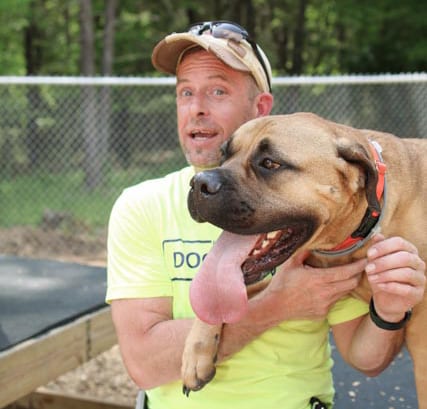Brian Manning, CPDT-KA

Owner, Lead Behavior Consultant Hometown: Manchester, NHCurrent Home: Hopkinton, RI CPDT-KA; Certified Professional Dog Trainer #2081640APDT Premium Professional Member #74463IACP Professional Member #3099

Owner, Lead Behavior Consultant Hometown: Manchester, NHCurrent Home: Hopkinton, RI CPDT-KA; Certified Professional Dog Trainer #2081640APDT Premium Professional Member #74463IACP Professional Member #3099
(C) 2025 Canine Behavioral Services Inc. • 401-491-9050 • Privacy Policy
Serving Rhode Island, Connecticut, Massachusetts, New Hampshire, Vermont, Maine, New York, New Jersey & Pennsylvania
The Leader-Follower Bond (Nature vs. Nurture)
A dog’s ability and readiness to properly meet the demands of domestic life is only half provided by its biological predisposition (Nature) – the other half is realized by the effects of socialization and training (Nurture). Without the guidance of a calm, assertive and effective Leader, a dog’s social adjustment and ability to respond well to an owner may suffer irreparable damage.
A calm, consistent and assertive owner can assist in guiding a dog’s choices until it is properly socialized and trained to make the correct and “balanced” choices on its own. In order to accept our Leadership, a dog must adopt a submissive and cooperative attitude at a very early stage of development and remain that way for the rest of its life.
In order to obtain true Leadership status, one must establish social limits (e.g. not permitting dogs to jump up, bite hands (mouthing), not pull on leash, etc.), maintain personal space limits, and develop a cooperative relationship based on gentle and positive compliance training and be able to apply corrective measures when necessary. As a result of these efforts, the dog will naturally become increasingly affectionate and cooperative.
Once basic social boundaries are established, other behavioral objectives are rapidly achieved by presenting or omitting rewards, such as affection, food, play and other activities or resources that the dog may desire to obtain.
(excerpt from the Handbook of Applied Dog Behavior and Training-Vol II; Steven R. Lindsay)